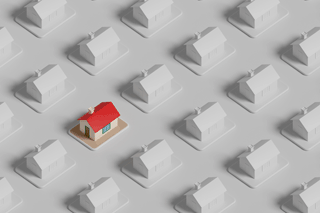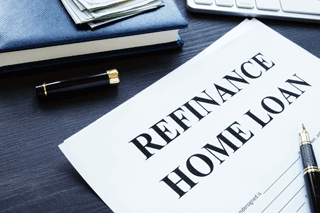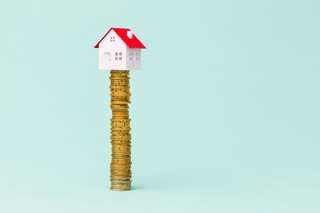Quote Of The Week
“The sharp rise in vacant land prices over the year, together with rising construction costs, will place further upwards pressure on the cost of new housing.”
Tim Lawless, CoreLogic’s research director
Prices Continue Upward Spiral
 Property prices continued on their growth path in October, with house prices up 1.6% and apartment prices rising 1.2% nationally.
Property prices continued on their growth path in October, with house prices up 1.6% and apartment prices rising 1.2% nationally.
This brings annual growth rates to 24.2% for houses and 13.3% for apartments, led by strong uplift in regional markets. In the apartments markets, the Combined Regions have risen 22.5% in annual terms, compared to 11.8% in the Combined Capitals.
In the housing markets, growth in October was led by 2.8% in Brisbane, followed by rises of 2.0-2.2% in Adelaide, Regional NSW and Hobart. There were increases of 1.8-1.9% in Regional Tasmania, Regional Queensland, Regional Victoria and Canberra.
In the August-September-October quarter, the Combined Regions rose 5.3%, compared to 4.8% in the Combined Capitals.
The largest quarterly rise occurred in Brisbane (up 7.1%), followed by Adelaide (6.5%) and Regional NSW, Regional Tasmania, Canberra and Hobart (which all increased 6.4%).
The highest annual growth has been in Sydney (30.4%), Regional Tasmania (29.8%, Canberra (29.0%) and Regional NSW (28.6%).
Rental Shortage Crisis Bites
 Investors may be returning to the market but their participation remains below long-term averages, leading to a rental shortage crisis.
Investors may be returning to the market but their participation remains below long-term averages, leading to a rental shortage crisis.
Analysis by Property Investment Professionals of Australia (PIPA) shows that, while between 2007 and 2017 investors made up about 35% of the property market, in the past four years that has decreased.
PIPA Chairman Peter Koulizos says tighter lending conditions contributed to a reduction of investors which meant there are fewer rental properties available and a further tightening of the rental market.
“The volume of investors has been trending up over the past few months, but the fact that they were generally stuck on the sidelines for a number of years means there is a significant rental property deficit in most parts of the nation,” Koulizos says.
He says the gap between the number of properties available for rent and the number of tenants seeking a property has been increasing since 2017.
With fewer rental properties available in many parts of Australia because of the reduced number of investors, rents are rising.
Refinancing Hits All-Time High
 The number of home-owners refinancing their mortgages hit an all-time high in the September Quarter.
The number of home-owners refinancing their mortgages hit an all-time high in the September Quarter.
The latest data from settlement platform PEXA reveals refinancing in the five mainland states increased 28% in the quarter to a record 108,443 transactions.
The figures include only external refinances, which is when a loan is refinanced with a different lender – and only transactions lodged on PEXA’s platform, but as it handles 95% of all refinance transactions nationally, its figures paint a clear picture of the market.
It is expected the next lot of ABS home loan figures due for release next week will show continued strong levels of refinancing, which hit a monthly record value of $11.4 billion in July.
Most owners refinancing are based in lower to middle income suburbs, with owners in Tarneit in Melbourne’s west the most active.
Victoria had the highest number of refinances in the quarter, 37,814, followed by New South Wales, 36,245, Queensland 18,027, Western Australia 9,125 and South Australia 7,232.
Land Rises Faster Than Building Materials
 Home builders may be concerned about the rising costs of materials but, according to the latest Housing Industry Association (HIA) figures, land prices are increasing faster.
Home builders may be concerned about the rising costs of materials but, according to the latest Housing Industry Association (HIA) figures, land prices are increasing faster.
The latest HIA-CoreLogic Residential Land Report, which covers sales activity in 51 housing markets across Australia, shows the cost of residential land has increased more than twice as fast as the cost of building materials over the past year.
HIA chief economist Tim Reardon says the shortage of building materials caused construction delays and added 4% to the average cost of building in a home in FY2021.
“At the same time, the cost of residential land prices rose 8.5%, adding further to the cost of new home building,” Reardon says.
“The strength of demand for land is set to continue throughout 2022 and into 2023. As land is a key component of housing, this increase in price has been a key driver of the rising cost of homes and the decline in housing affordability.”
Further Price Rises Predicted
 House price growth is predicted to hit new heights as Australia opens its borders to international travel again in the coming weeks.
House price growth is predicted to hit new heights as Australia opens its borders to international travel again in the coming weeks.
The latest RBA Cash Rate Survey of experts and economists reveals 60% believe it will contribute to further price increases.
Finder head of consumer research Graham Cooke says while the Australian house price surge of the past 18 months has been driven by home-buyers and local investors, once borders open it is expected overseas investors will return and create more competition in markets.
“The opening of international borders may well fuel the market even further,” Cooke says.
Those surveyed predict houses will continue to record higher price growth than apartments in all capital cities.
The predicted price increases mean Sydney homeowners will potential “earn” 3.5 times the average household salary from capital growth, while average Melbourne owners would make 1.6 times the average salary on their homes.




